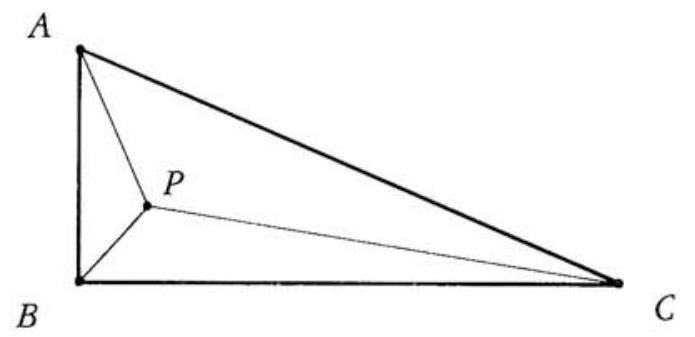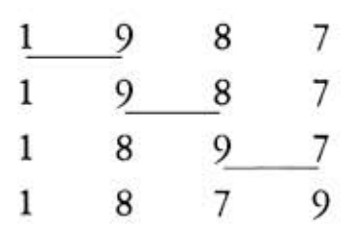¶ 1987 AIME Problems and Solutions
Problem Set Workbook
Access the downloadable workbook for 1987 AIME problems here.
Discussion Forum
Engage in discussion about the 1987 AIME math contest by visiting Random Math AIME 1987 Forum
Individual Problems and Solutions
For problems and detailed solutions to each of the 1987 AIME problems, please refer below:
Problem 1: An ordered pair of non-negative integers is called "simple" if the addition in base requires no carrying. Find the number of simple ordered pairs of non-negative integers that sum to .
Solution:
Problem 2: What is the largest possible distance between two points, one on the sphere of radius with center and the other on the sphere of radius with center
Solution:
Problem 3: By a proper divisor of a natural number we mean a positive integral divisor other than and the number itself. A natural number greater than will be called "nice" if it is equal to the product of its distinct proper divisors. What is the sum of the first ten nice numbers?
Solution:
Problem 4: Find the area of the region enclosed by the graph of .
Solution:
Problem 5: Find if and are integers such that .
Solution:
Problem 6: Rectangle is divided into four parts of equal area by five segments as shown in the figure, where , and is parallel to . Find the length of (in cm) if and .

Solution:
Problem 7: Let denote the least common multiple of positive integers and . Find the number of ordered triples of positive integers for which , and .
Solution:
Problem 8: What is the largest positive integer for which there is a unique integer such that
Solution:
Problem 9: Triangle has right angle at , and contains a point for which , and . Find .

Solution:
Problem 10: Al walks down to the bottom of an escalator that is moving up and he counts steps. His friend, Bob, walks up to the top of the escalator and counts steps. If Al's speed of walking (in steps per unit time) is three times Bob's speed, how many steps are visible on the escalator at any given time? (Assume that this number is constant.)
Solution:
Problem 11: Find the largest possible value of for which is expressible as the sum of consecutive positive integers.
Solution:
Problem 12: Let be the smallest positive integer whose cube root is of the form , where is a positive integer and is a positive real number less than . Find .
Solution:
Problem 13: A given sequence of distinct real numbers can be put in ascending order by means of one or more "bubble passes". A bubble pass through a given sequence consists of comparing the second term with the first term and exchanging them if and only if the second term is smaller, then comparing the third term with the current second term and exchanging them if and only if the third term is smaller, and so on in order, through comparing the last term, , with its current predecessor and exchanging them if and only if the last term is smaller.
The example on the right shows how the sequence is transformed into the sequence by one bubble pass. The numbers compared at each step are underlined.
Suppose that , and that the terms of the initial sequence are distinct from one another and are in random order. Let , in lowest terms, be the probability that the number that begins as will end up, after one bubble pass, in the place (i. e., will have terms on its left and terms on its right). Find .

Solution:
Problem 14: Compute
Solution:
Problem 15: Squares and are inscribed in right triangle , as shown in the figures below. Find if area and area .

Solution:
The problems on this page are the property of the MAA's American Mathematics Competitions